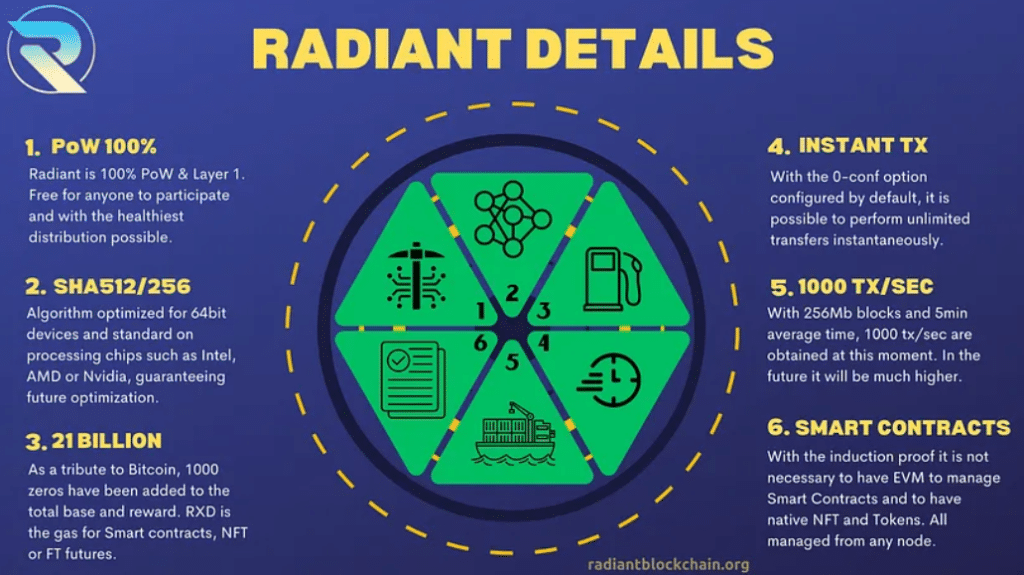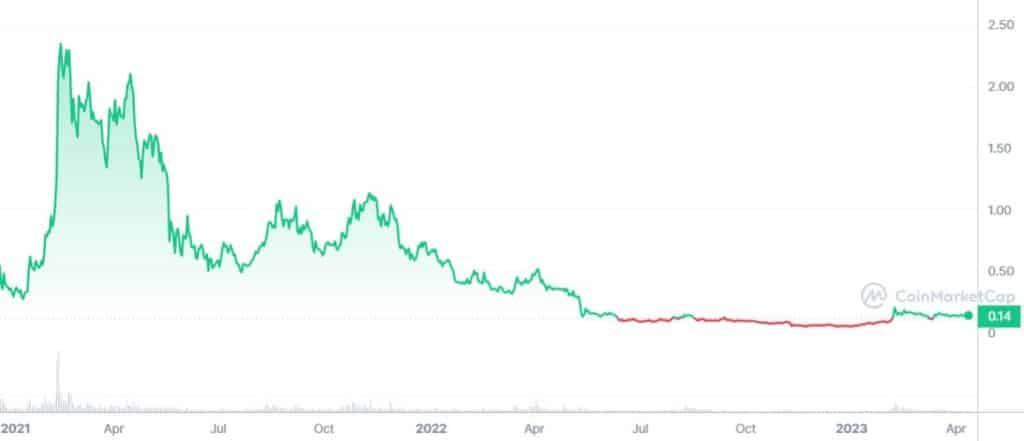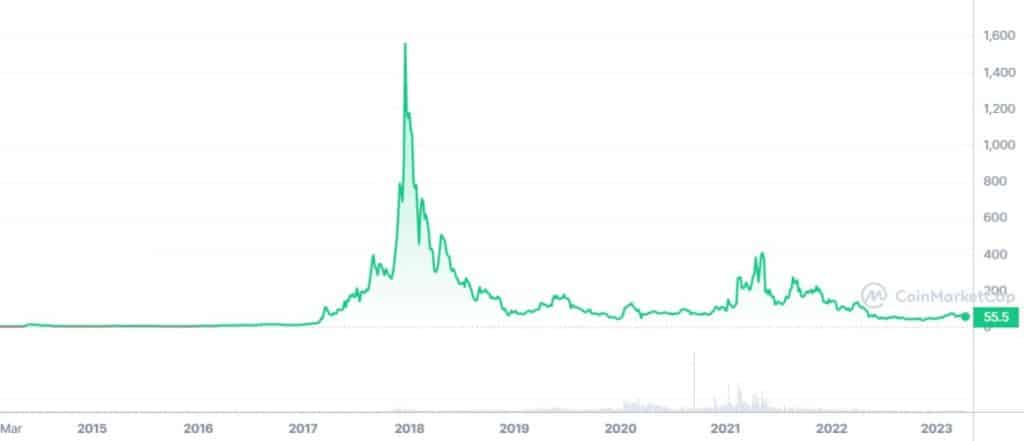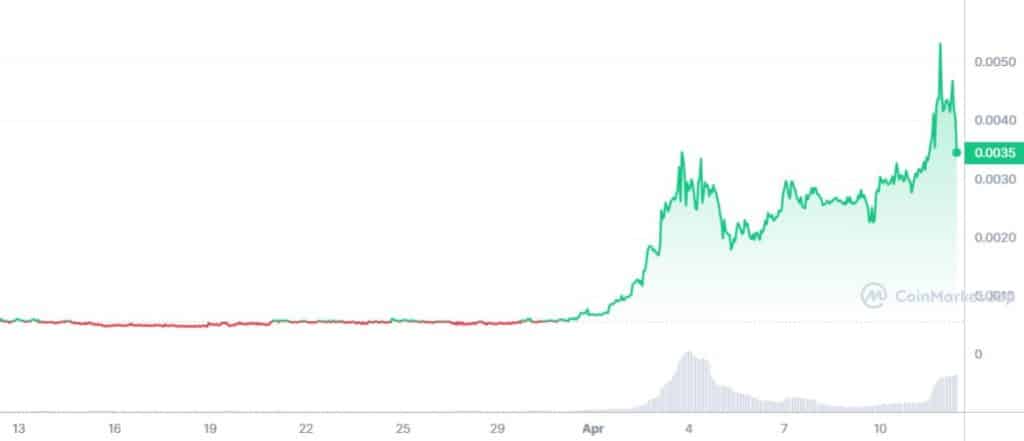In this article we analyze together 3 crypto projects and their tokens: The Graph (GRT), Dash (DASH) and Radiant (RXD).
Let’s see what they have to offer to the blockchain and Web3 world, while also taking a look at the graphs to understand the direction of these tokens.
Summary
The latest news for The Graph (GRT), Dash (DASH) and Radiant (RXD)
We begin by taking a look at the latest market news for the 3 crypto assets The Graph (GRT), Dash (DASH) and Radiant (RXD).
The Graph (GRT) is an indexing protocol that is used for querying data for networks such as Ethereum and IPFS. Anyone can create and publish APIs, called “subgraphs,” that Web3 applications can query to organize and access data on blockchain.
There are 3 recent news stories for this project:
- The first is the integration of The Graph’s technology with the price aggregator in DeFi Paraswap. Subgraphs have been successfully integrated within the platform and can be queried to obtain and organize reliable data such as price feeds from tokens.
- The second concerns the new partnership with Banxa (dated 23 March) to allow users to pay by credit or debit card to make API calls and obtain data for decentralized applications. This is an incentive for adoption as well as a way to simplify the user experience for those requesting The Graph’s services.
- The last piece of news, on the other hand, talks about the advancement of the work on “scaling” on the Arbitrum One network: as of today, 5% of the rewards for the indexing work performed by The Graph’s nodes is available on this layer-2 blockchain about which so much has been discussed in recent weeks given the release of ARB tokens via airdrop.
The Graph continues to scale with L2 🌱
Phase 2 is complete: 5% of indexing rewards are now available on @arbitrum ✨
Total indexing rewards on Arbitrum One are increasing over time, gradually moving over from L1.
This marks the next major milestone in scaling The Graph 🌟 pic.twitter.com/s6BeZANY37
— The Graph (@graphprotocol) April 11, 2023
As for Dash, an open-source blockchain that offers fast and cheap payments in a decentralized way with focus on privacy and scalability, the only news worth mentioning concerns the “listing” of the DASH token on the “Change Now” platform, which offers crypto swap services in an instant way by paying in FIAT currency.
Looking for a fast, easy, and secure way to swap crypto? Swap your $Dash in @ChangeNOW_io and get access to the best rates and lowest fee. Swap now at https://t.co/ucz2YzULci! ⚡ pic.twitter.com/NBr1XK3RIX
— Dash (@Dashpay) April 7, 2023
DASH, a crypto that originated as a fork of Litecoin in 2014, seems to have similarities in common with the Radiant (RXD) project in that both were born with the intention of providing a secure, fast and decentralized infrastructure for cryptocurrency transactions.
Both have the goal, albeit remote, of catching up with the king of the Bitcoin market and replacing it with their technologies.
We can see that Dash has already failed in its mission since, after 9 years of development, nothing remotely comparable has been seen with the Bitcoin protocol.
The token is decaying and nothing seems to portend that DASH will play important roles within the Web3 landscape.
In contrast, Radiant (RXD) has been in existence for only a few months. Could it be the next crypto successor to the throne?
The crypto Radiant (RXD) wants to replace Bitcoin
Radiant (RXD) is a peer-to-peer digital asset system that enables the direct exchange of value without going through a central financial infrastructure, such as the ECB or the Fed.
It is an open source protocol that through the use of blockchain aims to create an economy made up of free exchanges of digital assets.
Radiant wants to replace Bitcoin with its best performing technology in terms of scalability and power consumption. However, the challenge seems to be very tough: numerous crypto projects have tried over time to overtake Bitcoin but have all failed miserably over time.
In detail, let’s see what the commonalities and differences between the two protocols are.
Both lay the foundation of their work through the consensus mechanism between Proof-of-Work (PoW) nodes that uses the computational power of hardware to validate blocks within the blockchain.
Both Radiant and Bitcoin require minimal structure and timestamping of transactions, however, the former design enjoys a more efficient algorithm (SHA512256D) than the latter, capable of allowing for greater transaction scalability.
On the energy consumption front, it also appears that Radiant and its RXD coin are technically “better.” At a time in history when Co2 emissions are a problem to be addressed by all countries around the world, a protocol that appears to be friendly toward the environment may have a leg up in global adoption.
Structurally, there is a substantial difference.
On Bitcoin all nodes are the same and do similar work, while on Radiant there are superior nodes tasked with more delicate tasks in order to maintain the security and scalability of the network.
Both projects lack a team to manage them and rely directly on the community, although that of Bitcoin is considerably larger and more famous.
The names of the founders of the Radiant project are not known, nor is the identity of Satoshi Nakamoto, i.e., the one who first published Bitcoin’s whitepaper.
It seems that Radiant and RXD were also designed to compete with the smart contract world.
In fact, while for Bitcoin there are still no native smart contracts on it (except for the Chain-Key case adopted by ICP), for the “Bitcoin Killer” there are prerequisites for the creation of dApps that are based on digital contracts made on the Radiant blockchain.
This is a major advantage when we consider that to date Bitcoin is still used exclusively as a decentralized payment system.

Although Radiant seems to be an extremely more technological and functional network than Bitcoin, we must still consider one of the most important factors in this context, namely that of reliability.
Bitcoin has been around for 15 years, it is known and appreciated worldwide, there are hundreds of developers dedicated to integrating new features on the blockchain (such as the Lightning Network), but most importantly, it was the first project to offer itself as a decentralized infrastructure and will always remain the preferred choice for users and investors.
The BTC coin has made history and enjoys an unparalleled reputation in the cryptocurrency market. It seems highly unlikely that any project, including Radiant and its RXD crypto, will actually replace Bitcoin.
Price analysis for The Graph (GRT), Dash (DASH) and Radiant (RXD) crypto assets
Let’s now take a look at how the 3 crypto assets GRT, DASH, and RXD are behaving graphically instead.
GRT and DASH are marking negative trends of about 4% in the last 24 hours while RXD is traveling positively, although there was a drop in price overnight.
In more detail, GRT currently trades at $0.144 per token, has a market capitalization of $1.28 billion and volumes in the last 24 hours down 27% to $48 million.
DASH, whose name is derived from the appellation “digital cash,” trades at $55.54 per token, with a market capitalization of $623 million and volumes down 8% in the last 24 hours to a figure around $85 million.
Both cryptocurrencies are not exciting on the price action side and do not seem in the mood to produce any bullish legs in the short term.
The all-time highs are far away but were touched at different times: for GRT the high was reached in February 2021 while for DASH in December 2017.


As for RXD, Bitcoin’s nemesis currently trades at $0.0033 per coin with a price rise of 7.48%, the market capitalization is only $17.3 million (rank #684), and volumes of $1.1 million, up 289% from the previous day’s trading.
Over the past month there has been an incredible climb for this coin, which has seen an increase of almost 10x the initial value.
Around the $0.005 mark, a top construct has formed with the typical ” spike” structure, followed by a ” lower high” at $0.0047.
Usually these formations indicate greater likelihood of a downtrend break; however, compared to GRT and DASH, a reversion above the highs seems more feasible in this case.





